Heat pump
Heat pumps transfer heat from a lower temperature source to one of a higher temperature. This is the opposite of the natural flow of heat.
A refrigerant fluid is run through the lower temperature source. The fluid ‘absorbs’ heat and boils, even at temperatures below 0°C (although the coefficient of performance (COP) decreases with lower temperature). The resulting gas is then compressed, which further increases its temperature. The gas is passed into heat exchanger coils, where it condenses, releasing its latent heat. The process then repeats.
This is the same process that is used to extract heat from a fridge.
Heat pumps can be used domestically or commercially to provide hot water, space heating (either by providing hot water for under-floor heating or radiators, or supplying hot air) or other applications such as heating swimming pools.
In the UK, heat pumps are most commonly air-source or ground-source heat pumps. However, the temperature of ground water sources in the UK tends to be fairly constant for most of the year, at between 8 and 12°C, and so water source heat pumps can be more efficient.
- Air source heat pumps absorb heat from the outside air. Air-to-water systems provide hot water for direct use or to supply radiators or underfloor heating systems. Air-to-air systems provide hot air, either directly into an internal space, or to be distributed by fans throughout a building. See Air source heat pumps for more information.
- Ground source heat pumps use lengths of plastic pipe buried in the ground, either in a borehole or a horizontal trench. See Air source heat pumps for more information.
- Water source heat pumps absorb heat from a suitable local water source, such as a lake, river, well, borehole and so on. They can be ‘open-loop’ or ‘closed-loop’ systems. See Air source heat pumps for more information.
Refrigeration units also use heat pumps, as do chiller units that provide chilled water (CHW) for space cooling, for example in air handling units, fan coil units, chilled beams and so on. In this case, the system is reversed, absorbing heat from the interior and releasing it to the outside.
Reversible heat pumps can operate in either heating or cooling mode, using a reversing valve to change the direction of flow.
Heat pumps generally use electricity to power the compressor. However, in absorption heat pumps, the refrigerant (typically ammonia) is absorbed into water, then is released again by being heated. The heat source is generally gas fuelled (Gas Absorption Heat Pumps GAHP) but other heat sources can be used, such as solar heated water.
For more infomration about different types see: Types of heat pump.
NB The Energy White Paper, Powering our Net Zero Future (CP 337), published in December 2020 by HM Government, defines a heat pump as: ‘A device that extracts heat from the air, ground or water and concentrates it to a higher temperature and delivers it elsewhere, for example to a central heating system. It can replace traditional fossil fuel heating, such as a gas or oil boiler. Heat pump systems are designed to extract a greater amount of heat energy from the surrounding environment than the energy they consume in doing so, therefore they can act as a more efficient source of heat than a conventional electric heater, producing two to three times (or more for very efficient systems) as much heat output as they consume in electricity input.’
They are most effective where the power consumed by the pump is low, and this tends to be for use in modern buildings that are well sealed and insulated so that the heating requirement is minimal. It also requires that the system is appropriately sized for the heat demand that needs to be serviced.
[edit] Related articles on Designing Buildings
- Absorption heat pump.
- A decade for heat pumps.
- Air source heat pumps.
- Amber warnings raise building overheating concern.
- BSRIA domestic hot water heat pumps testing.
- BSRIA global heat pump market 2019.
- COVID-19 and the global heat pump market.
- Domestic heat pumps and the electricity supply system.
- Dynamic thermal modelling of closed loop geothermal heat pump systems.
- Earth-to-air heat exchangers.
- Exhaust air heat pump.
- Geothermal pile foundations.
- Getting the most out of heat pumps and heating.
- Ground energy options.
- Ground source heat pumps.
- Heat exchanger.
- Heat pump COP & EER and central plant SCOP in ambient loops.
- Heat pumps and heat waves: How overheating complicates ending gas in the UK.
- Heat recovery.
- Hybrid heat pump electric panel heating.
- Mechanical ventilation with heat recovery.
- Renewable energy sources: how they work and what they deliver: Part 3: Electrically driven heat pumps DG 532 3.
- Residential heat pump installations: the role of vocational education and training.
- Reversible heat pumps to provide comfort cooling.
- Room-based heat pumps.
- Smoothing the path to net zero.
- Solar-assisted heat pump.
- Tempering heating.
- The role of onsite renewables in tackling climate change.
- Types of heat pump.
- Underfloor heating.
- Water source heat pumps.
- What are the different types of heat pumps and where would you use them?
- What is diversity in HVAC systems?
[edit] External references
- Heat pump retrofit in London. Carbon Trust, 27 August 2020.
Featured articles and news
Boiler Upgrade Scheme and certifications consultation
Summary of government consultation which closes 11 June 2025.
Deputy editor of AT, Tim Fraser, discusses the newly formed society with its current chair, Chris Halligan MCIAT.
Barratt Lo-E passivhaus standard homes planned enmasse
With an initial 728 Lo-E homes across two sites and many more planned for the future.
Government urged to uphold Warm Homes commitment
ECA and industry bodies write to Government concerning its 13.2 billion Warm Homes manifesto commitment.
From project managers to rising stars, sustainability pioneers and more.
Places of Worship in Britain and Ireland, 1929-1990. Book review.
The emancipation of women in art.
Call for independent National Grenfell oversight mechanism
MHCLG share findings of Building Safety Inquiry in letter to Secretary of State and Minister for Building Safety.
The Architectural Technology Awards
AT Awards now open for this the sixth decade of CIAT.
50th Golden anniversary ECA Edmundson awards
Deadline for submissions Friday 30 May 2025.
The benefits of precast, off-site foundation systems
Top ten benefits of this notable innovation.
Encouraging individuals to take action saving water at home, work, and in their communities.
Takes a community to support mental health and wellbeing
The why of becoming a Mental Health Instructor explained.
Mental health awareness week 13-18 May
The theme is communities, they can provide a sense of belonging, safety, support in hard times, and a sense purpose.
Mental health support on the rise but workers still struggling
CIOB Understanding Mental Health in the Built Environment 2025 shows.
Design and construction material libraries
Material, sample, product or detail libraries a key component of any architectural design practice.
Construction Products Reform Green Paper and Consultation
Still time to respond as consultation closes on 21 May 2025.
Resilient façade systems for smog reduction in Shanghai
A technical approach using computer simulation and analysis of solar radiation, wind patterns, and ventilation.








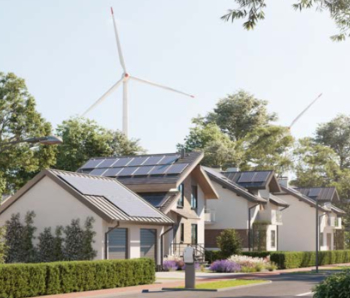
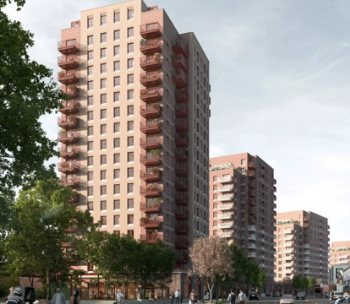



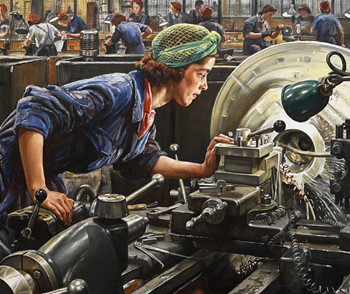
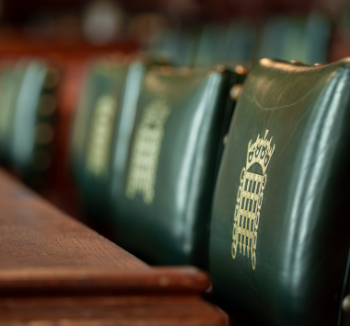


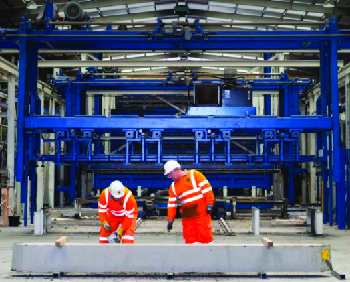





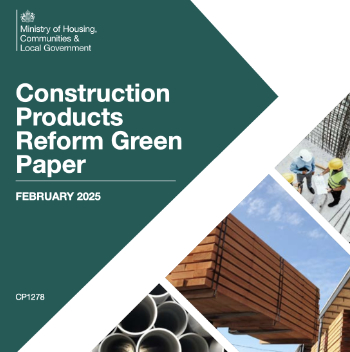
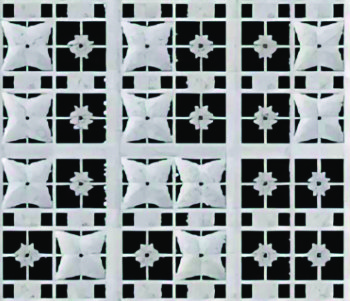
Comments
I attach a set of very recent test results on my A2A heat pump. Heat pump 'under-sizing' destroys the rationale for running heat pumps and there is a lot of it about. Have you heard the stories about heat pumps costing £2000 per winter to run and they do not heat the house properly? The stories are true
Ambient temperatures were -1.5C at 0600.
The sky was cloudless and ambient temperatures rose steadily throughout the test.
Time_ _ Pwr_ _ Blr In_ Out _ _Set Pt _Amb _
0950 _ _300 _ _ 19.2 _ _ 28.5 _ _ 21 _ _ 1.0 _ _ All doors shut except 3
1000_ _ 293 _ _ 19.0 _ _ 27.4 _ _ 21 _ _ 2.0 _ _
1005_ _ 295 _ _ 18.9 _ _ 27.2 _ _ 21 _ _ 2.5 _ _ All doors opened
1010_ _ 385 _ _ 18.7 _ _ 29.0 _ _ 21 _ _ 2.5 _ _
1015_ _ 480 _ _ 18.6 _ _ 32.4 _ _ 21 _ _ 3.0 _ _ Whole house heated, stable at high load
1050_ _ 470 _ _ 18.7 _ _ 34.0 _ _ 21 _ _ 5.5 _ _
Set Pt +1 → 22C. Fan noise up.
'Under-sized' condition starts
1055_ _ 645 _ _ 18.8 _ _ 35.9 _ _ 22 _ _ 6.0 _ _
1100_ _ 675 _ _ 18.8 _ _ 36.2 _ _ 22 _ _ 6.0 _ _
Set Pt -1 → 21C
1105_ _ 560 _ _ 18.7 _ _ 33.7 _ _ 21 _ _ 6.5 _ _
1110_ _ 640 _ _ 18.7 _ _ 35.0 _ _ 21 _ _ 6.5 _ _ No recovery of normal running
1115_ _ 665 _ _ 18.7 _ _ 36.3 _ _ 21 _ _ 7.0 _ _
1120_ _ 665 _ _ 18.8 _ _ 36.5 _ _ 21 _ _ 7.0 _ _
1125_ _ 665 _ _ 18.8 _ _ 36.4 _ _ 21 _ _ 7.5 _ _ Pump stuck in under-sized condition
1130_ _ 665 _ _ 18.9 _ _ 36.4 _ _ 21 _ _ 7.5 _ _ Lounge door shut
1135_ _ 655 _ _ 18.9 _ _ 36.4 _ _ 21 _ _ 8.0 _ _
1140_ _ 670 _ _ 19.0 _ _ 36.7 _ _ 21 _ _ 8.0 _ _ 3 bedroom doors shut
1145_ _ 630 _ _ 19.0 _ _ 36.4 _ _ 21 _ _ 8.0 _ _ Fan noise down
1150_ _ 605 _ _ 19.2 _ _ 36.0 _ _ 21 _ _ 8.5 _ _
1155_ _ 605 _ _ 19.5 _ _ 36.0 _ _ 21 _ _ 9.0 _ _
1200_ _ 560 _ _ 19.6 _ _ 34.7 _ _ 21 _ _ 9.0 _ _
1205_ _ 535 _ _ 19.6 _ _ 34.4 _ _ 21 _ _ 9.5 _ _ 4th bedroom door shut
1210_ _ 430 _ _ 19.7 _ _ 33.3 _ _ 21 _ _ 9.5 _ _
1215_ _ 315 _ _ 20.0 _ _ 31.6 _ _ 21 _ _ 9.5 _ _Under-sized condition ends
1220_ _ 316 _ _ 20.0 _ _ 30.1 _ _ 21 _ _ 10.0 _ _ Normal running.
1225_ _ 319 _ _ 20.0 _ _ 30.3 _ _ 21 _ _ 9.5 _ _ 4 bedroom doors opened
1230_ _ 310 _ _ 19.5 _ _ 29.0 _ _ 21 _ _ 10.0 _ _ Lounge door opened
1240_ _ 312 _ _ 19.1 _ _ 29.1 _ _ 21 _ _ 10.0 _ _
1250_ _ 445 _ _ 18.9 _ _ 33.7 _ _ 21 _ _ 9.5 _ _ Whole house heating stable at high load
1400_ _ 415 _ _ 19.0 _ _ 33.0 _ _ 21 _ _ 9.0 _ _ Test ends. All doors open
Notes:
1: 'Doors' means internal doors(8 in total) that connect to the hall where the pump is located.
2: From stable high load at 1050 at Set Pt 21C, a Set Pt increase of 1C increased Pwr from 470 to 675watts. This increase started the 'under-sizing' test.
3: Recovery from 'under-sizing' lasts from 1100 to 1215. Progressively the Set Pt was reduced back to 21C, the lounge door shut, 3 bedroom doors shut and finally a 4th bedroom door shut to get back to normal running.
4: With normal running achieved at 1220, all doors were open at 1400 when the test ended. By then the ambient temperature had increased from 2.5C at 1005 to 9.5C which should have assisted the recovery of normal running.
5: This test provides an indication of the large heat load reduction required to recover a pump in the 'under-sized' condition.
6: The quick reversal of the Set Pt increase of 1C failed to return the pump to the previously stable condition. Five more doors had to be closed to recover normal running whilst the ambient temperature also rose by about 6.5C between 1005 and 1250.
7: The 'under-sized' condition is an instability that requires considerable intervention to reduce heat loads to recover the normal operation.
8: The 'under-sized' condition destroys the economics of running a heat pump.